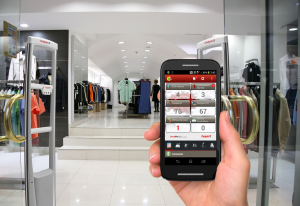 What does a shoplifter look like? How do you know if someone is going to steal from you? I get asked these questions all the time by store associates and mangers. The real answer is, a shoplifter doesn’t fit any specific demographic. There is no common appearance to a thief. I’ve personally apprehended 12 year old kids, soccer moms, grandmothers, lawyers, doctors, truck drivers, college professors in addition to the professional thieves. There are a few tips to look out for that you should share with your teams.
What does a shoplifter look like? How do you know if someone is going to steal from you? I get asked these questions all the time by store associates and mangers. The real answer is, a shoplifter doesn’t fit any specific demographic. There is no common appearance to a thief. I’ve personally apprehended 12 year old kids, soccer moms, grandmothers, lawyers, doctors, truck drivers, college professors in addition to the professional thieves. There are a few tips to look out for that you should share with your teams.
Looking around/up for associates and/or cameras
Most people shop by looking at the product in front of them. I always get suspicious when I see someone looking everywhere but in front of them. Subjects that are constantly looking up (for cameras) are pretty easy to spot; when’s the last time you looked at the ceiling at the supermarket? These people usually catch my attention rather quickly.
Grabbing items without regard to size, color or size
If I’m shopping for a pair of pants, I am looking for a specific style and size. Thieves who are looking to steal to resell usually will just take whatever they can get their hands on. If you see someone walk by a display of clothing and just start randomly selecting product, they may be planning on stealing that product from you.
Clearing pegs/shelves
If I’m buying *electronic item x*, chances are, I’m only going to buy one. If you notice someone clear an entire peg or shelf, especially if it’s a high risk product, which is another great indicator that their intentions may be less than honest.
Wearing unseasonal clothing
This one is my favorite. Every time I’ve seen someone wearing a coat in the summertime, I’ve ended up throwing them in jail for stealing from me. If it’s 90 degrees outside, someone wearing a thick coat should send up some major red flags.
Staging merchandise
Maybe you walk by a quiet corner of the store and see a subject place a few pairs of headphones on a back aisle. Perhaps they decided not to purchase them; or perhaps they’ve staged them to steal after they’re convinced that the area is clear. I’m always suspicious of buggies of product near fire exits. Often times, a thief will stage product prior to committing the theft. If you find product out of place, it’s best to simply return it to its home location
Removing/attempting to remove EAS devices
No brainer, right? If you walk by someone and they are really struggling to remove an EAS device, they probably don’t have intentions on buying the item. If you, or your team see this, the customer should immediately be given customer service. I usually ask if I can help them with the security device… it gets the point across that I am aware of their actions, without me actually having to say anything accusatory.
While not every shoplifter will demonstrate the same overt acts, if store personnel are attentive and engaging with all customers, these behaviors can be picked up on and properly relayed to store managers. Remember, there is no better anti-theft tool than a well-trained, attentive employee. By looking out for these subtle cues, your team can better protect your #1 financial investment, store inventory.









